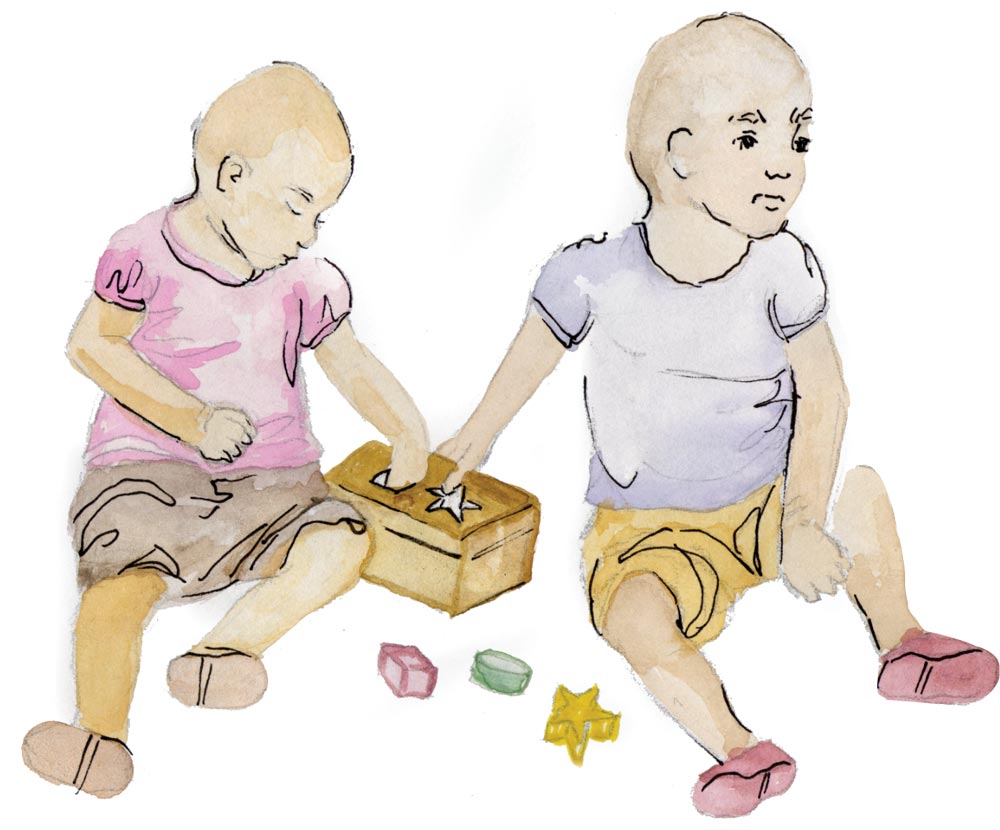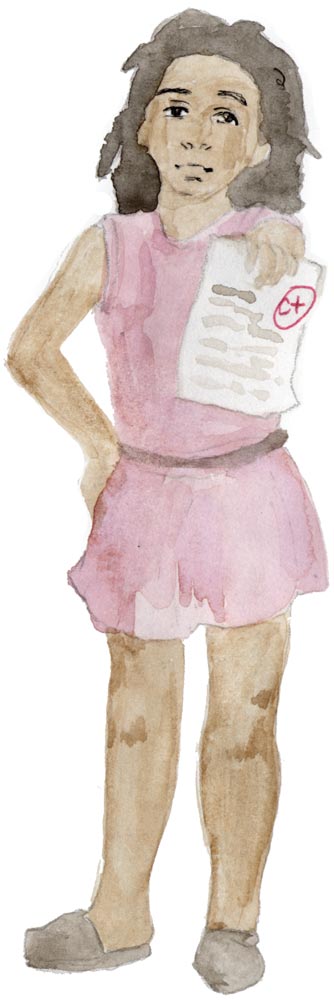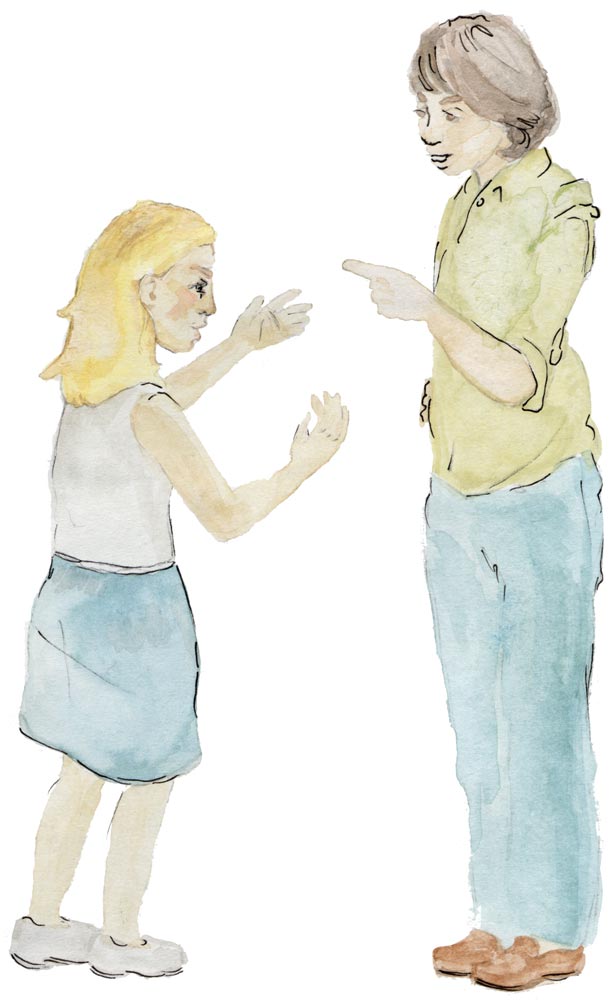Raising Children
UVA professors share advice about the hardest job in the world

Too strict? Too soft? Parents have the best intentions for their children, but everyone from Dr. Spock to Tiger Mom has conflicting advice about how to raise them.
“What good mothers and fathers instinctively feel like doing for their babies is usually best after all,” said Dr. Benjamin Spock, who wrote influential books about child rearing in the 1940s. “Happiness is mostly a byproduct of doing what makes us feel fulfilled.”
“What Chinese parents understand is that nothing is fun until you’re good at it,” writes Amy Chua, whose book Battle Hymn of the Tiger Mother caused an uproar when it came out last January. “To get good at anything you have to work, and children on their own never want to work, which is why it is crucial to override their preferences.”
These are just a few schools of thought in the polarizing child-rearing debate that often draws on anecdotal evidence and larger cultural trends instead of science. So, who’s right? UVA professors who study psychology and education have parenting advice backed up by experiments and research. Here they offer practical—and scientifically tested—strategies to deal with common problems.

It may be comforting to know that your child is not the only one who has tantrums. And they aren’t limited to just humans. Rhesus monkey babies have tantrums, and it turns out that rhesus monkey mothers also find it embarrassing; they are more likely to respond to the tantrum if there are bystander monkeys.
“Without fully developed verbal skills, young children often struggle to communicate,” says Tina Stanton-Chapman, an associate professor at the Curry School of Education who focuses on early childhood. “They have wants and needs, but don’t have the language to express them. A tantrum is a form of communication, though not one you should encourage.”
She says parents often respond to outbursts by pandering to their children’s desires, which rewards their behavior.
Improved communication between parents and child is the first step to preventing tantrums. “Parents can try to be very explicit about what their expectations are and use simple language,” says Stanton-Chapman. “Often at 2, children are able to understand two- or three-word sentences, so try using them.” Expressing expectations before a situation begins can also be helpful. “If you don’t tell a child that a library is a quiet place before you walk in, you’ll be in a situation in which punishment might be required. That can be avoided,” she says.
Stanton-Chapman’s research about preschool classrooms reveals several factors conducive to good behavior from toddlers. Young children thrive when they have a routine; they know what to expect and what you expect of them. “You’ll notice that on the reality TV show Nanny 911, one of the first things the nanny does is impose a routine,” says Stanton-Chapman. “Transitions between activities can be hard. Five-minute warnings and even using timers can help.”
If a tantrum occurs anyway, stay calm and avoid empty threats. “Kids are testing your boundaries. Boundaries need to be clear,” she says. If you say that the consequence for the tantrum is leaving the library, then leave.”
A child may throw a fit to gain more control of a situation. “Give children choices to make, both of which you find acceptable,” says Stanton-Chapman. “They get to practice making choices and it gives them a sense of control over themselves. Would they like apple slices or carrots?”
What’s better for small children: strict or permissive parenting? Young children require a lot of support, protection and instruction. “I encourage a flexible approach that allows both parents and children a measure of control. We want to teach both independence and cooperation.”

Preschoolers are in a stage of rapid development. At first physically clumsy, they learn gross and fine motor skills in leaps and bounds. They are also socially clumsy and need to learn how to interact with both adults and peers.
“Friendship is different for young children than it is for older ones,” says Stanton-Chapman. “Instead of choosing friends for consistent internal qualities—like kindness or shared interests—small children use external indicators—like wearing a purple shirt or playing with blocks.”
At this age, children make and break social connections quickly. “You’ll notice that young children will often tell other young children, ‘You are not my friend,’” she says.
Children will take a toy—or even hit—as a way of initiating social interaction. Stanton-Chapman’s research addresses children who need explicit instruction about how to gain attention, initiate conversation, respond to requests and take turns. “We read books that show a social interaction and then we play games with the kids in which they can practice the behavior that they’ve just seen,” she says. “Children are empowered when they know the social scripts work just as they did for the characters in the storybook. These scripts seem obvious to older people, but we had to learn them at some point, too.”
Stanton-Chapman says that around the age of 5, children will start conforming to gender roles they’ve learned. Boys will often play with boys. Girls with girls. Girls tend to be more verbal and boys more physical. “Of course, there are exceptions,” she says. “My daughter is quite the tomboy.”

How much of your children’s personalities and traits are genetic? And how much influence do you have as a parent? “How different are you from your siblings?” asks Joseph P. Allen (Col ‘80), a clinical psychologist and professor in the UVA psychology department. “Genes do make a great deal of difference.”
Allen says that genes determine whether a child will be extroverted or introverted, but experiences—especially ones derived from a close relationship, like between parent and child—help shape the structure of the brain. Parenting matters, even when it comes to the literal configuration of a child’s mind.
“We must remember that there is an important two-way interaction between the structure of the brain and experience,” says Allen. “The structure of the brain influences behavior, but in turn our experiences shape the brain. If you were to spend the next few months learning to juggle, there would be structural change to your brain that could be detected by an MRI scan.”
How can parents support the development of their children’s brains? Allen says that, just like anyone else, children learn best from doing something themselves and experiencing consequences. The second best way to learn is watching other people do things. “Being told is the least effective way of learning of the three,” says Allen.
Parents also use praise to encourage their children. “With young kids it is important to be very specific about what you are praising,” says Stanton-Chapman. “Explain exactly what you liked about their behavior. Children want to please you, and your praise is a reward.”
Allen says praise for older children and teens is also best when it’s concrete. “It’s most effective to praise for something your child actually has control over, like effort or time spent. Praising a teen for being talented may make her less likely to try something again, because she’ll be more afraid of failure.”
And what about failure itself? Will it crush a child’s confidence to the extent that future success will be less likely? “Failure is an amazing teacher,” says Allen. “Parents are often desperate to protect their children from it, but it is a necessary part of engaging with the world.”

Allen and his colleagues have been meeting with teens by themselves, with their parents and with their peers for the past 13 years in a longitudinal study at UVA. He’s found that there is a strong correlation between the way children interact with their parents and their peers. Children who submit unquestioningly to their parents often do the same with peers, while those who negotiate with their parents are more likely to discuss decisions with their peers.
“Teens need to practice making decisions and using their very expansive capacity for reasoning. This practice allows them to develop those parts of their brains,” says Allen. So your argumentative 13-year-old may actually be developing skills that will help her later.
Just because your child is more independent doesn’t mean they don’t need you. Edith Lawrence (Educ ‘82), a clinical psychologist and professor at the Curry School of Education whose research focuses on middle school girls, says that even as children enter their teen years, parents are still the most important people in children’s lives. “People often assume peers have more influence, but girls will most often identify a parent or a grandparent as the most influential person in the lives.”
Lawrence encourages parents to listen to their middle school children and support their efforts at problem-solving, rather than solve their problems for them. “If you want young people to be good decision-makers you have to give them lots of opportunities to practice the skill. The ‘because I said so’ parent retains all the power but misses a chance to invite the child to share her best thinking,” says Lawrence. “Collaborative problem-solving is excellent for kids and parents. It’s like that old saying, ‘Give a man a fish and he’ll have dinner for a day; teach him to fish and he’ll eat for a lifetime.’ We teach our children how to make good decisions by scaffolding opportunities for them to practice.”
Both Allen and Lawrence point out that adolescents have significant reasoning and abstract thinking potential that they can apply to figuring out options and possible outcomes. “The teenage brain actually works faster at some tasks than most adult brains,” says Allen.

To return to an example from the animal kingdom, the adolescent rhesus monkey leaves its troop to explore new territory. The human teenager tests adult behavior and experiments to define her identity.
Allen suggests that the teenage brain is wired for risk-taking. The teen years are full of new challenges, and teens often take both positive risks—taking a harder math class or auditioning for the school play—and negative ones—driving too fast or shoplifting. “Risk is required for learning,” says Allen. “Many parents, very well-intentioned, shelter their teenage children to keep them safe or to help them get ahead. They do the work for their children and make things too easy. This isn’t good for them; they need to do things for themselves.”
Despite the fact that teens are risk-takers, they often make it through their adolescence without major mishap. But are there ways to help guide teenage experimentation?
In Allen’s clinical practice, he says, many teens don’t feel that they do anything “real,” or believe that their behavior has little impact on other people. “When teens have the opportunity to do a job that affects others, they tend to do much better,” Allen says. “When teens volunteer, their dropout rates are halved. Pregnancy rates drop by 50 percent.”
Allen says that juvenile delinquency is a relatively new phenomenon that has arisen from a cultural differentiation between adolescence and adulthood. Modern teens hang out with teens and live in a separate world from adults. “When adolescents worked alongside adults, these problems were very rare,” says Allen. “For most of human history, people were considered adults by the time they were 15.”
Lawrence says if you ask a teen to make decisions about risk in a quiet setting where they have time to consider their options, their choices are similar to adults’ responses. “Unfortunately, when they’re with their friends, teens are more likely to make riskier choices,” says Lawrence. Asking teens during a calm moment to share their thinking about risky choices may help them make better decisions later.

When Allen was in college in the late 1970s, he called his parents once a week. Today, the average college student talks to his parents 13 times a week. More young people move home after college than ever before. “Even a generation ago, parents didn’t have the time or resources to be helicopter parents,” says Allen. “And young adults were better for it.”
Allen says that dependence, both economic and emotional, of young adult children on their parents is epidemic. Though times are tough economically, “the trends we’re seeing were in place and going strong well before the recent recession began.
“In the past, in hard economic times, young people were more like to contribute to than to take from their parents,” Allen says. “We now see parents whose 401K retirement plans are under water applying extra support to their 20-somethings, who often are living far better than their parents did at similar ages.”
Control is often what’s at stake. “Raising a teen is about transferring control of a teen’s life from the parent to the teen,” Allen says. “If that doesn’t happen, how can the young adult successfully launch an adult life? How will he or she have the skills?”
Parents may want their children to benefit from the wisdom that they’ve gleaned from experience. “We don’t want them to make the mistakes we did,” says Allen. “But they need to make their own mistakes, gain their own wisdom.”
Allowing young adults to make their own choices and solve their own problems demonstrates that parents have confidence in them. “It’s empowering for young adults to have their parents believe in them,” says Allen.
Our ideas about the best way to parent have changed with time. “There was a time when it was more punitive,” says Stanton-Chapman. “In the ‘70s and ‘80s, it became more about praise, reward and lack of parental control. The trend now is toward controlled flexibility.” Controlled flexibility involves parents providing boundaries for their children’s behavior, but ultimately sharing control with their children. Parents respond to the concerns and problems of their children and advise them about the choices they make.
Lawrence agrees that flexibility is key because every child is different and has diverse needs. “It’s about developing a good fit between a child’s temperament and a parent’s parenting style. Parents can work to improve the match by focusing on what works best for each child.”
She also says that parents need to let go of the idea of being perfect. “We all have our flaws as parents, and kids find ways to flourish despite them,” Lawrence says.
Though love is essential, Allen says, it alone is never enough. “Young people need someone who understands their needs, whether it be for guidance, for support, or even for a firm but gentle push out the door to start learning to make it on their own.”